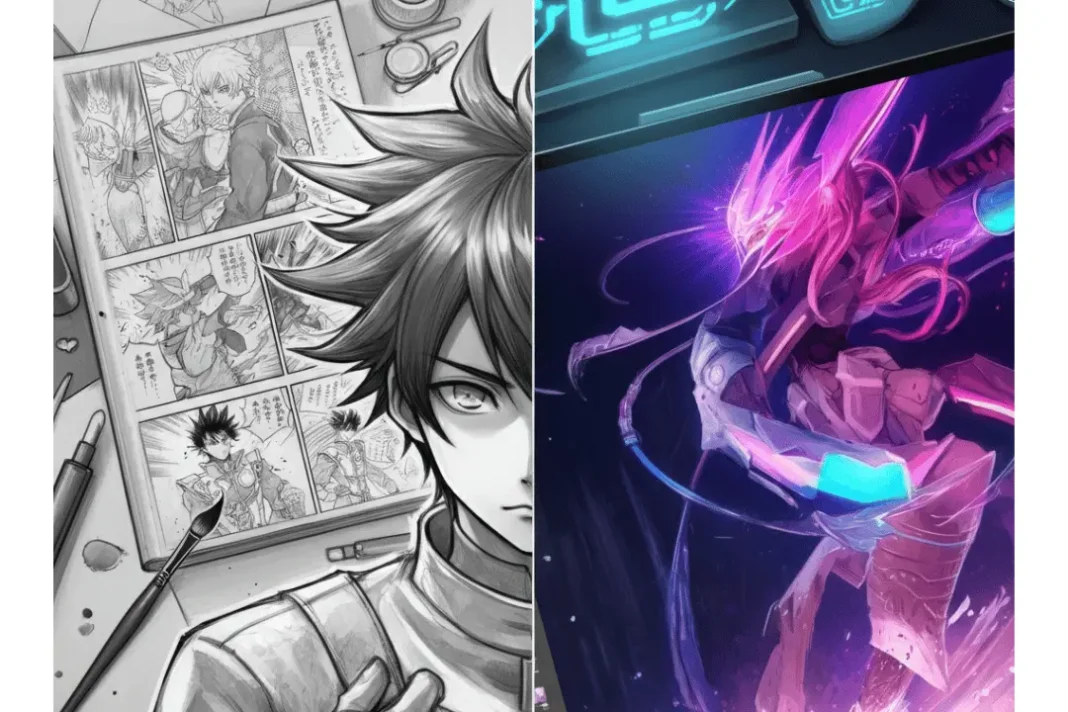The world of sequential art and visual storytelling has undergone tremendous transformation over the decades, with few mediums experiencing as dramatic an evolution as hentai comics. This distinctive form of Japanese adult-oriented manga has journeyed from niche print publications to sophisticated digital masterpieces that reach global audiences. Understanding this evolution requires examining the cultural, technological, and artistic factors that have shaped this medium’s development.
Contents
Historical Origins and Print Foundations
The roots of hentai comics trace back to Japan’s rich tradition of erotic art, particularly the ukiyo-e woodblock prints of the Edo period. These historical influences laid the groundwork for what would eventually become a distinct subset of manga culture. The term “hentai” itself, meaning “transformation” or “metamorphosis,” reflects the medium’s capacity for artistic and cultural change.
During the mid-20th century, as manga culture began to flourish in post-war Japan, publishers recognized the commercial potential of adult-oriented sequential art. Early hentai publications emerged from underground circles and small publishing houses, operating within Japan’s complex cultural framework regarding sexuality and artistic expression. These early works were characterized by simple production methods, limited distribution networks, and artistic styles that borrowed heavily from mainstream manga traditions.
The print era established fundamental storytelling conventions that would persist throughout the medium’s evolution. Artists developed unique visual languages, panel structures, and narrative techniques specifically tailored to their audience’s expectations. These foundational elements created a distinct artistic identity that separated hentai comics from both mainstream manga and Western adult comics.
Technological Catalysts for Change
The advent of digital technology in the 1990s marked a pivotal moment in the evolution of hentai comics. Computer graphics software enabled artists to experiment with new visual techniques, color palettes, and production methods that were impossible or prohibitively expensive in traditional print media. Digital coloring, sophisticated shading techniques, and enhanced visual effects became standard tools in the artist’s arsenal.
Personal computers democratized the creation process, allowing independent artists to produce professional-quality work without the backing of major publishing houses. This technological shift led to an explosion of creativity and diversity within the medium, as barriers to entry were significantly lowered. Artists could now experiment with different styles, themes, and narrative approaches without the commercial constraints imposed by traditional publishers.
The development of digital distribution platforms further revolutionized the medium’s accessibility. Online marketplaces, subscription services, and direct-to-consumer platforms enabled creators to reach global audiences directly, bypassing traditional publishing and distribution networks. This technological infrastructure created new economic models that supported both established and emerging artists.
Cultural and Social Influences
Japan’s evolving social attitudes toward sexuality and artistic expression have profoundly influenced the development of hentai comics. As Japanese society gradually became more open about discussing adult themes, the medium gained greater cultural legitimacy and artistic recognition. This cultural shift allowed artists to explore more sophisticated themes and narrative structures beyond simple adult entertainment.
The rise of otaku culture in Japan created a dedicated audience base that appreciated the artistic and technical craftsmanship involved in creating high-quality hentai comics. This cultural phenomenon elevated the medium from mere adult entertainment to a recognized form of artistic expression with its own aesthetic standards and creative traditions.
International cultural exchange has also played a significant role in the medium’s evolution. As Japanese popular culture gained global prominence, hentai comics found audiences worldwide, leading to cross-cultural influences that enriched the artistic vocabulary and thematic range of the medium.
Digital Transformation and Artistic Innovation
The transition to digital formats has enabled unprecedented levels of artistic sophistication in hentai comics. Modern digital tools allow artists to create works with photorealistic backgrounds, complex lighting effects, and dynamic visual compositions that rival traditional fine art in terms of technical execution. The medium has evolved far beyond its humble origins to become a showcase for cutting-edge digital artistry.
Interactive elements and multimedia integration have opened new possibilities for storytelling. Digital platforms can incorporate animation, sound effects, and interactive features that create immersive experiences impossible in traditional print media. These innovations have pushed the boundaries of what constitutes a “comic,” blending elements of animation, gaming, and traditional sequential art.
The development of specialized software and tools designed specifically for manga and comic creation has streamlined the production process while enhancing creative possibilities. Artists can now work with templates, pre-designed backgrounds, and customizable character models that accelerate production without compromising artistic quality.
Globalization and Market Expansion
Digital distribution has transformed hentai comics from a primarily Japanese phenomenon into a global medium. Online platforms have made these works accessible to international audiences, creating new markets and revenue streams for artists. This global reach has encouraged creators to consider international tastes and preferences, leading to more diverse content and artistic styles.
Translation technologies and community-driven localization efforts have made hentai comics accessible to non-Japanese speakers, further expanding their global appeal. Professional translation services have improved the quality of localized content, ensuring that narrative subtleties and cultural references are properly conveyed to international audiences.
The global market has also attracted international artists to the medium, bringing diverse cultural perspectives and artistic traditions that enrich the overall creative landscape. This cross-pollination of ideas has resulted in hybrid styles that blend Japanese artistic traditions with international influences.
Economic Models and Creator Empowerment
Digital platforms have revolutionized the economic landscape for hentai comic creators. Subscription-based services, crowdfunding platforms, and direct sales models have created multiple revenue streams that provide greater financial stability for artists. This economic diversification has enabled more creators to pursue their artistic vision without compromising their commercial viability.
The direct relationship between creators and consumers facilitated by digital platforms has eliminated many intermediaries, allowing artists to retain greater control over their work and receive a larger share of revenue. This creator empowerment has led to more experimental and artistic works that might not have been commercially viable under traditional publishing models.
Contemporary Landscape and Future Directions
Today’s hentai comics represent the culmination of decades of artistic, technological, and cultural evolution. Contemporary works showcase sophisticated storytelling techniques, stunning visual artistry, and production values that rival mainstream entertainment media. The medium has established itself as a legitimate form of artistic expression with its own aesthetic principles and creative traditions.
The integration of artificial intelligence and machine learning technologies promises to further transform the medium. AI-assisted art creation, automated translation services, and personalized content recommendations are already beginning to reshape how hentai comics are created, distributed, and consumed.
Virtual and augmented reality technologies offer exciting possibilities for immersive storytelling experiences that could redefine the medium’s boundaries. These emerging technologies suggest that the evolution of hentai comics is far from complete, with new innovations continuing to push creative boundaries.
Conclusion
The evolution of hentai comics from simple print publications to sophisticated digital masterpieces reflects broader changes in technology, culture, and artistic expression. This transformation demonstrates the medium’s remarkable adaptability and the creative ingenuity of its artists. As digital technologies continue to advance and global connectivity increases, hentai comics will likely continue evolving, maintaining their position as a dynamic and innovative form of sequential art that challenges traditional boundaries while honoring its cultural heritage.
The journey from print to digital has not merely been a technological upgrade but a fundamental reimagining of what hentai comics can achieve as an artistic medium. This evolution continues today, promising even more exciting developments in the years to come.
You may also read: What Does DC Comics Stand For? The Story Behind the Legendary Letters
For more info visit Nhentai


